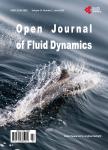Investigation of Wave-Structure Interaction Using State of the Art CFD Techniques
Investigation of Wave-Structure Interaction Using State of the Art CFD Techniques作者机构:School of Computing Mathematics and Digital Technology Manchester Metropolitan University Manchester UK School of Marine Science and Engineering Marine Institute University of Plymouth Plymouth UK School of Mechanical Aerospace and Civil Engineering University of Manchester Manchester UK
出 版 物:《Open Journal of Fluid Dynamics》 (流体动力学(英文))
年 卷 期:2014年第4卷第1期
页 面:18-43页
学科分类:1002[医学-临床医学] 100214[医学-肿瘤学] 10[医学]
主 题:Wave Loading Wave Energy Wave-Structure Interaction Manchester Bobber CFD Physical Experiments FV CV-FE SPH Cartesian-Cut-Cell SPHysics AMAZON SC STAR CCM+ CFX
摘 要:The suitability of computational fluid dynamics (CFD) for marine renewable energy research and development and in particular for simulating extreme wave interaction with a wave energy converter (WEC) is considered. Fully nonlinear time domain CFD is often considered to be an expensive and computationally intensive option for marine hydrodynamics and frequency-based methods are traditionally preferred by the industry. However, CFD models capture more of the physics of wave-structure interaction, and whereas traditional frequency domain approaches are restricted to linear motions, fully nonlinear CFD can simulate wave breaking and overtopping. Furthermore, with continuing advances in computing power and speed and the development of new algorithms for CFD, it is becoming a more popular option for design applications in the marine environment. In this work, different CFD approaches of increasing novelty are assessed: two commercial CFD packages incorporating recent advances in high resolution free surface flow simulation;a finite volume based Euler equation model with a shock capturing technique for the free surface;and meshless Smoothed Particle Hydrodynamics (SPH) method. These different approaches to fully nonlinear time domain simulation of free surface flow and wave structure interaction are applied to test cases of increasing complexity and the results compared with experimental data. Results are presented for regular wave interaction with a fixed horizontal cylinder, wave generation by a cone in driven vertical motion at the free surface and extreme wave interaction with a bobbing float (The Manchester Bobber WEC). The numerical results generally show good agreement with the physical experiments and simulate the wave-structure interaction and wave loading satisfactorily. The grid-based methods are shown to be generally less able than the meshless SPH to capture jet formation at the face of the cone, the resolution of the jet being grid dependent.



